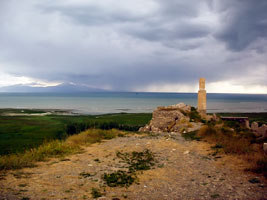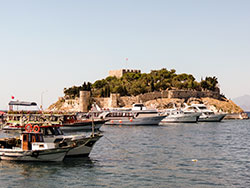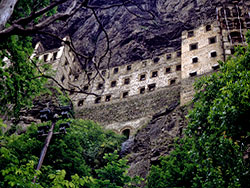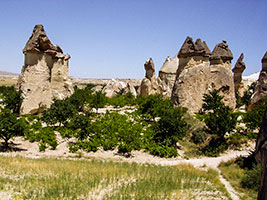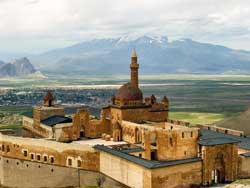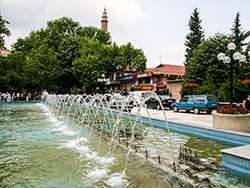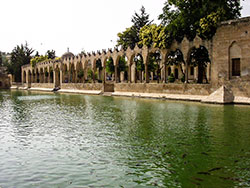Mysterious Lake Van or Van Gölü is Turkey's largest and deepest lake. This alkaline soda lake, at an altitude of 1,640 m, is surrounded by an area full of natural beauty and history. On its eastern shore, the remains of the old cıty of Van testify about its tumultuous history. In the middle of the lake lies the island Akdamar with remnants of the glorious Armenian past. The modern city of Van with a population of approximately 400,000 is located 4 km from the southeast border of the lake.
Historical Background
Underneath the old city (Eski Van) are the remains of Tushpa, the ancient capital of the kingdom of Urartu. While the Assyrians referred to this rival state as Urartu, it was known to the Hebrews and in the Bible as Ararat (Jeremiah 51:27). The Urartians themselves referred to their state as Biainili, also spelt Biaineli, from which the Armenian Van was derived. The kingdom of Urartu or Ararat flourished from the 13th to the 7th centuries BCE and was a strong opponent of Assyrian power. An indication of their power is the fact that the prophet Jeremiah calls upon the kingdom of Ararat to come up against Babylonia. Eventually, the kingdom came of Urartu to an end when subsequent waves of Cimmerians, Scythians, and Medes raided Urartu.
Sights and Photos of Van & Akdamar
The main attraction of Van is, of course, the like-named lake, the largest and deepest lake of Turkey. Moreover, it is quite unique as an alkaline lake with a pH of 9.8 with its own ecosystem.
The impressive citadel with Van Kalesi, the Urartian castle and temple, both dating back from the 9th century BCE, is of great historical value.
The predecessor of the present city, Eski Van (Old Van), was devastated during World War I and the few remains were destroyed by an earthquake in the 1950s. All that is left of it now are three mosques and a few fragments of other buildings amidst a large carpet of grass next to the citadel. Walking around here, it is hard to imagine that before 1915, the year of its destruction, this was an attractive town of 80,000 people living in stone and wood houses. The town contained a thriving bazaar, several churches and mosques, and even some foreign consulates.
The highlight of a visit to Van is undoubtedly the island of Akdamar with the Armenian Church of the Holy Cross. Akdamar was once a centre of Armenian culture. In 921 AD, Gagik Artzruni, the king of Vaspurakan, built a palace, church, and monastery on the island. The church of the Holy Cross (Akdamar Kilisesi) is the sole remnant of this glorious past and has recently been restored. The walls of the Holy Cross Church are still in a superb condition and are decorated with wonderful relief carvings which are among the masterworks of Armenian art. The reliefs are actually a layman's bible displaying different stories from the Bible. Inside the church, there are still some preserved frescoes. Next to the church, there is an old Armenian churchyard with a large number of gravestones, emphasizing the importance of Akdamar to the Armenian people.
Unfortunately, I wasn't able to take a picture of the famous Van Cats.
Here are the photos of Van and Akdamar Island, click on the thumbnails to see greater pictures
https://turkeyphotoguide.com/van?1&Van.htm#sigProIda54d0a6783
Travel Information & Travel Tips
I visited Van several times, namely in 1992, 1997 and 2002. Turkish Airlines offers daily flights from Istanbul to Van. Both, in 1997 and 2002, we found Hotel Yakut (Tel: +(90) 432 214 28 32 - 216 75 24 - 216 34 80, Fax: (0432);216 63 51 Kazım Karabekir Cad. PTT Sok. No:4) a very nice place to stay in Van.
Van was the basis from which we visited the medieval Kurdish castle Hoşap Kalesi at about 50 km and the Urartian palace at Çavuştepe.

